Asymmetry - Houses And Player Boards
2021. September 09.
In last week’s spotlight, the designers took a closer look at the Combat system in Voidfall. Now, it’s time to talk a bit about the Asymmetry in the game through the House boards and reveal a new House illustration!
We’ve teased the player boards in previous spotlights, but today we are going to take a closer look.
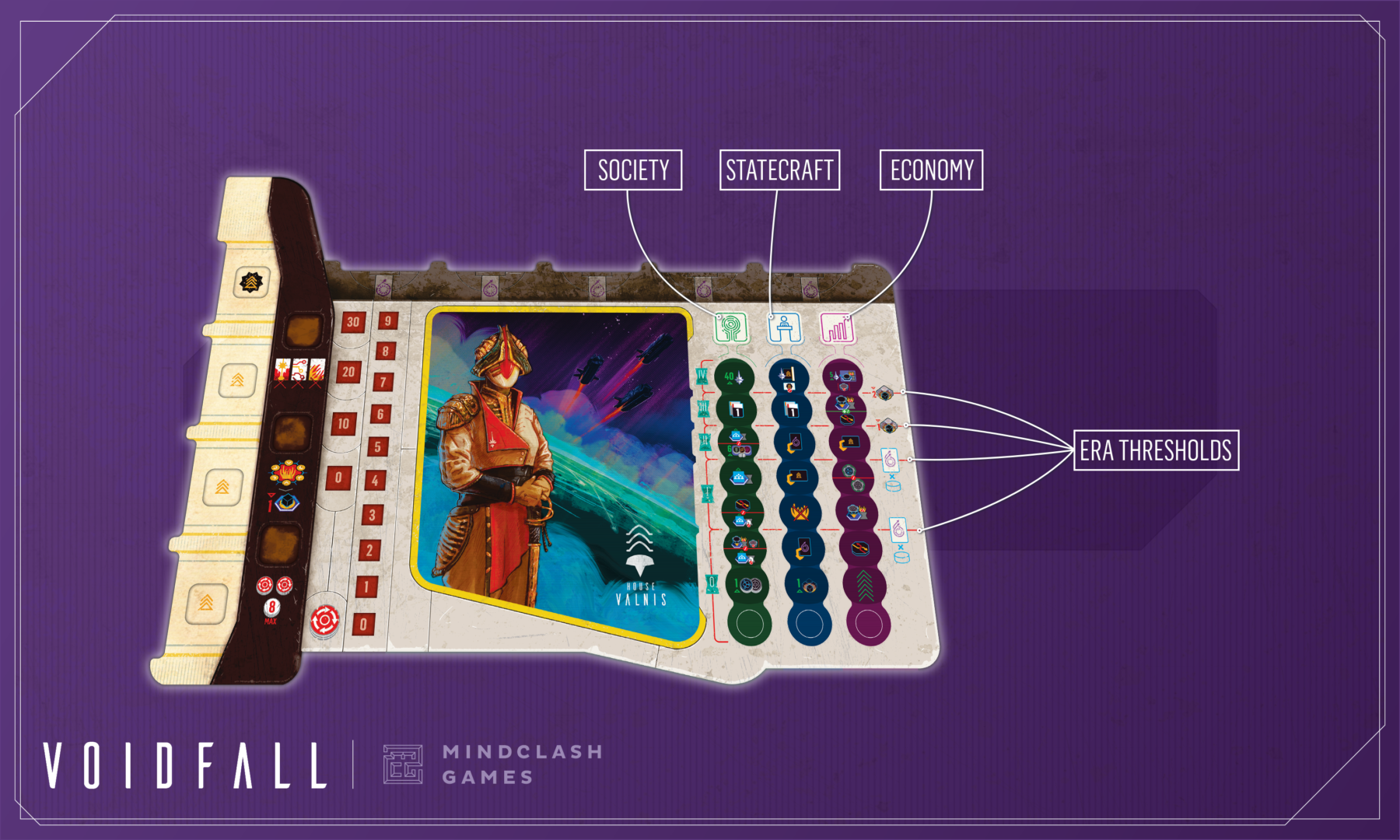
Besides the Focus cards, the other main focal point of your play is the triple-layer player board that incorporates your House mat, showing the specific tracks and abilities of that House. On the left, you see the slots for your Agenda cards, as covered in Spotlight #3. On the right, you see the Civilization Tracks, which are identical for the four Houses we recommend for your first (few) plays. Yet even here these starting Houses have some asymmetry: each has a pair of Origin cards, each with a unique starting Technology, and you pick one to start with (and the other is removed from the game). For each House, we created two Origin cards: one more flush with resources, and a more “empire-building” focused Technology, and one with a more immediate combat-ready one. On the back of these Origin cards are the Starting Agendas: a card that will guide you throughout the game and determine your main focus early on. For the first four Houses, the “Builder” Origin rewards for Guilds and high Population, and the “Fighter” Origin rewards more Sectors, and military Installations.
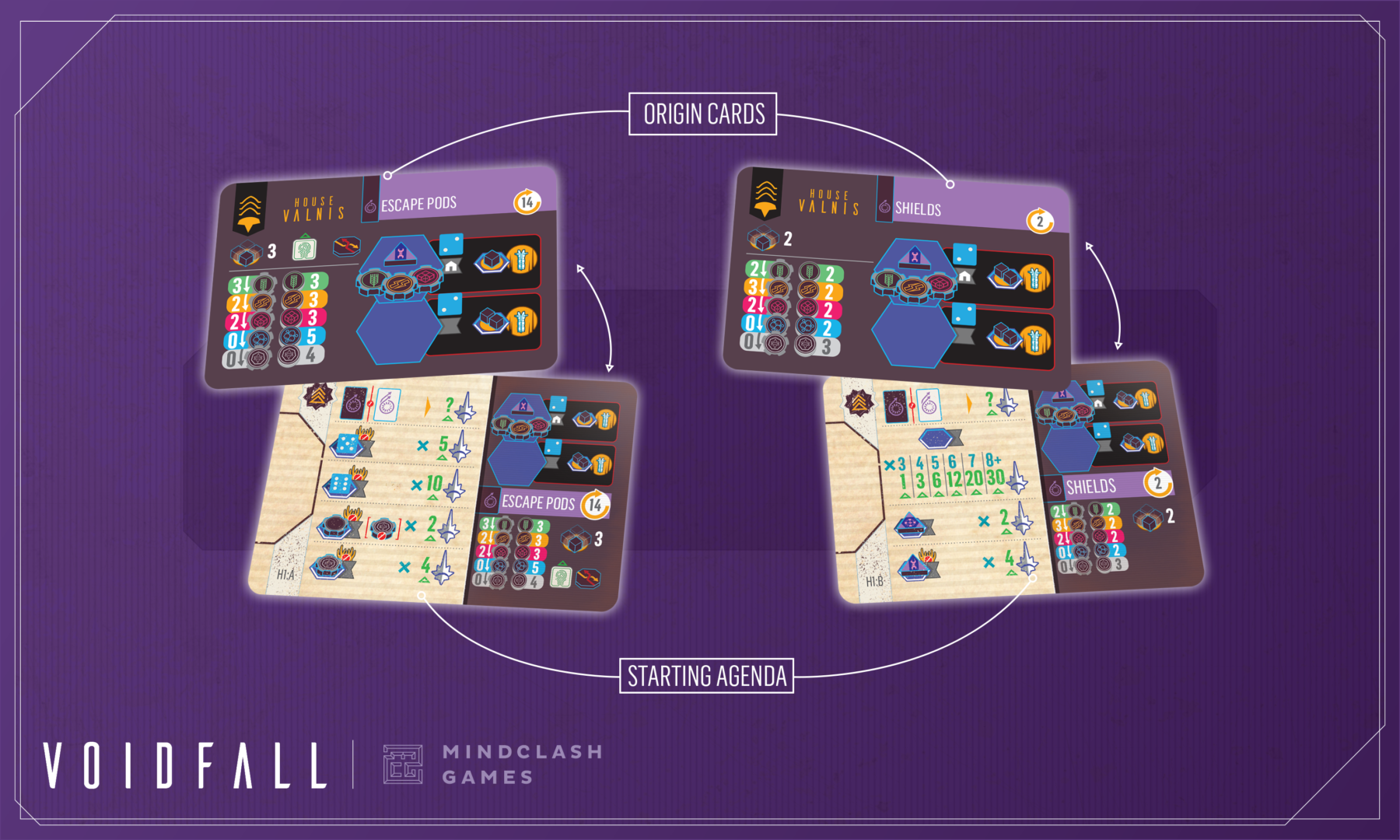
We’ve already hinted at the Civilization tracks in earlier Spotlights, but it’s time to introduce you to all three of them: Society, Statecraft and Economy. When you advance on one of these tracks you receive the benefit above the marker and then move the marker up to cover it. The rewards you get for advancing on the Civilization tracks tend to get more juicy the higher you climb.
Each track is split into Eras. You start in Era 0 for all three aspects of your House, and each track is independent: once you cross the first threshold you are in Era 1, and so on until Era 4 is reached. The first two thresholds are Research Thresholds and are beneficial - crossing each allows you to have an Improved Technology. Hence, you need to reach at least Era 1 on at least one of your Civilization tracks to Improve a Technology at all.
The top two red lines are Demilitarization Thresholds: as the society of your House is becoming more specialized and advanced, they are also growing increasingly weary with the struggle against the Voidborn, diminishing your ability to maintain and command a large space navy. This means that crossing these thresholds requires you to spend Fleet Power markers from your reserve back to the supply before you can receive the next benefit.
Advancing your Eras is a strategic choice: which track(s), how high, how soon... But how do you actually advance? By using Focus cards, of course. We mentioned in passing Paradigm Shift on Reinforcements Focus in Spotlight #5, but many other Focus cards allow you to advance too.
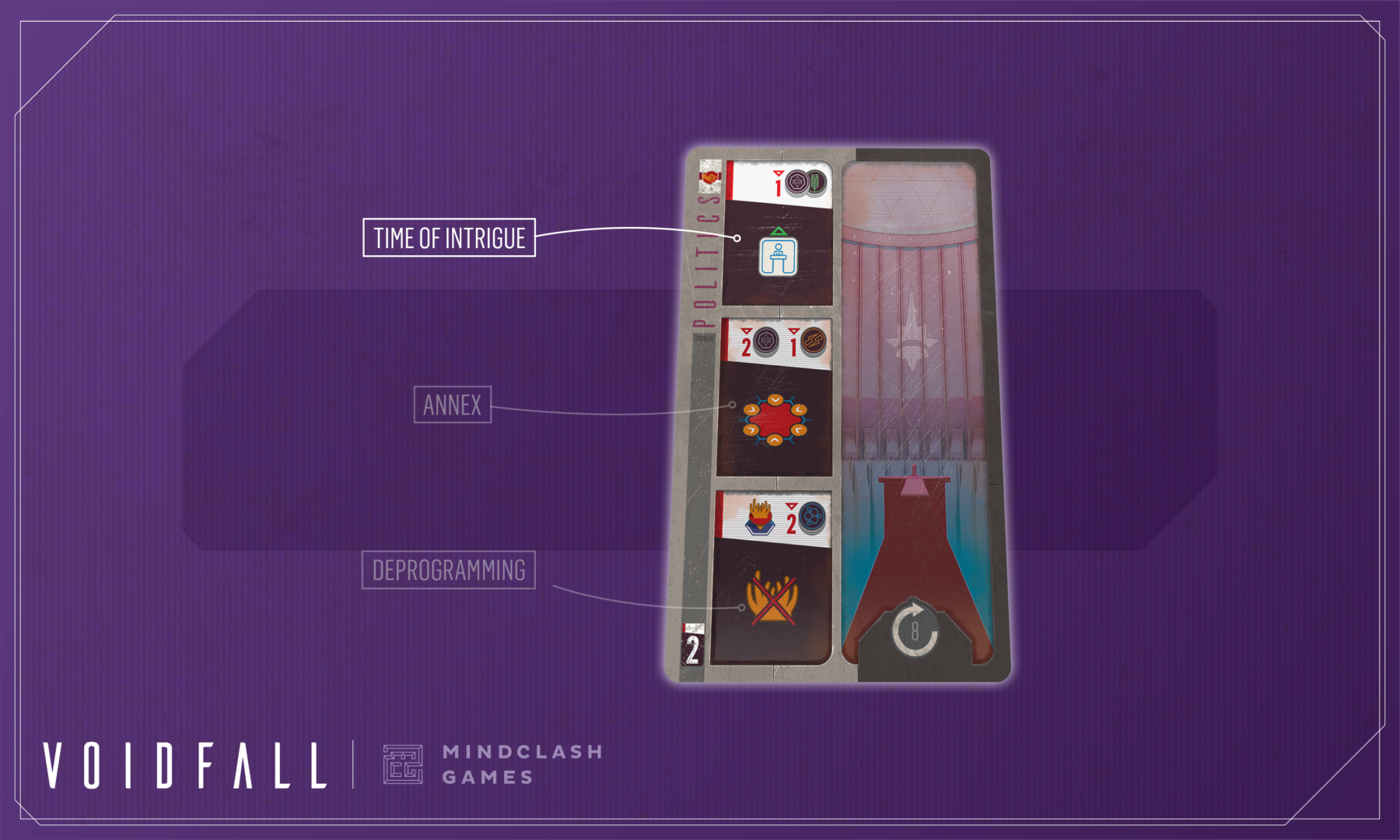
Time of Intrigue on your Politics Focus card allows you to advance on your Statecraft track for the cost of a food and a credit, receiving the next reward along the track (a Fleet Power into your reserve in the example below).
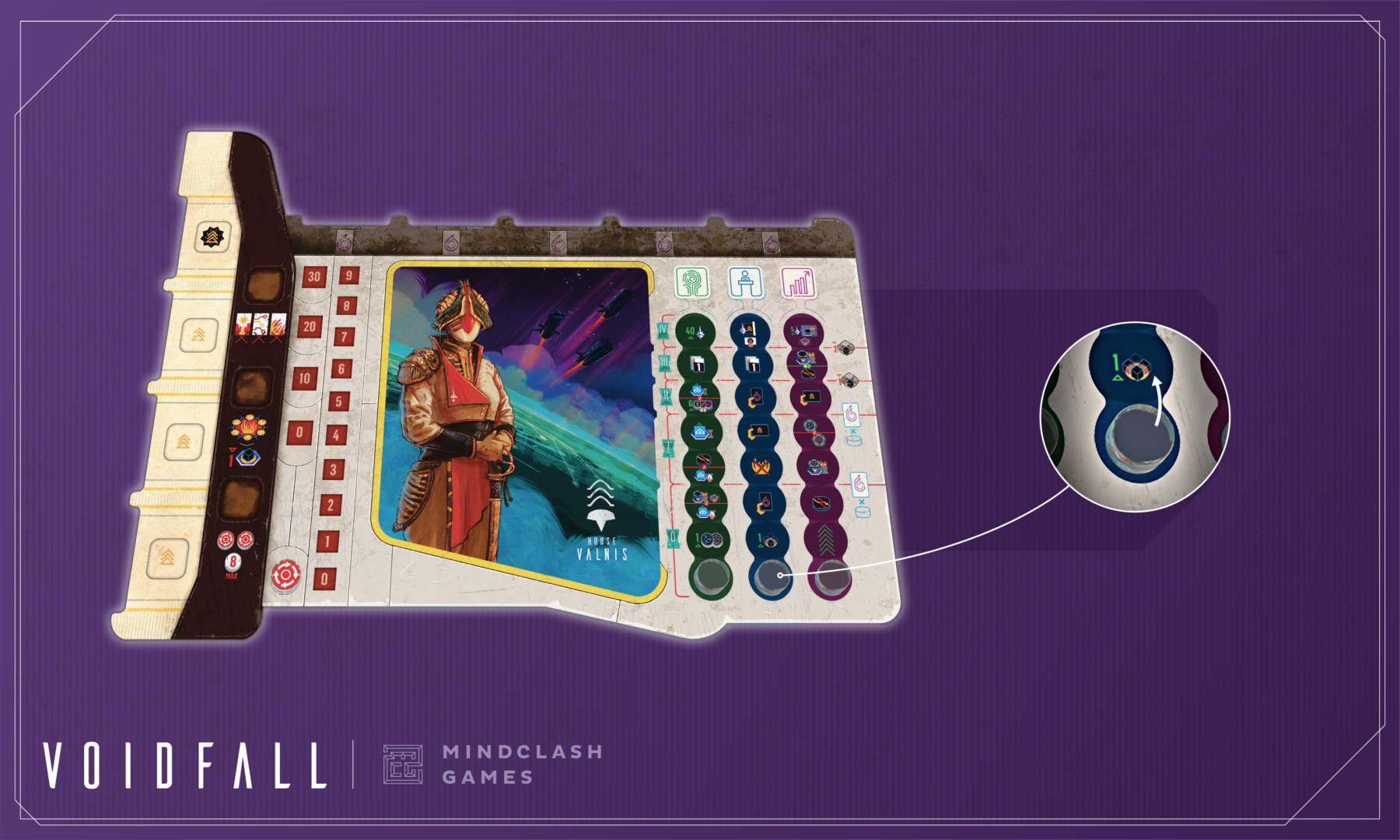
If you’ve been following our previous Spotlights you might be able to work out the icons for the other two actions on your Politics Focus. Annex is another way of conducting an Invasion, the same way as Combat Assignment did on the Conquest Focus (covered in Spotlight #4). The Deprogramming action allows you to remove Corruption from a sector you control or your player board.
To showcase all this on a House that’s more advanced in terms of game complexity, it is time for us to reveal the never-before-seen House Zenor!
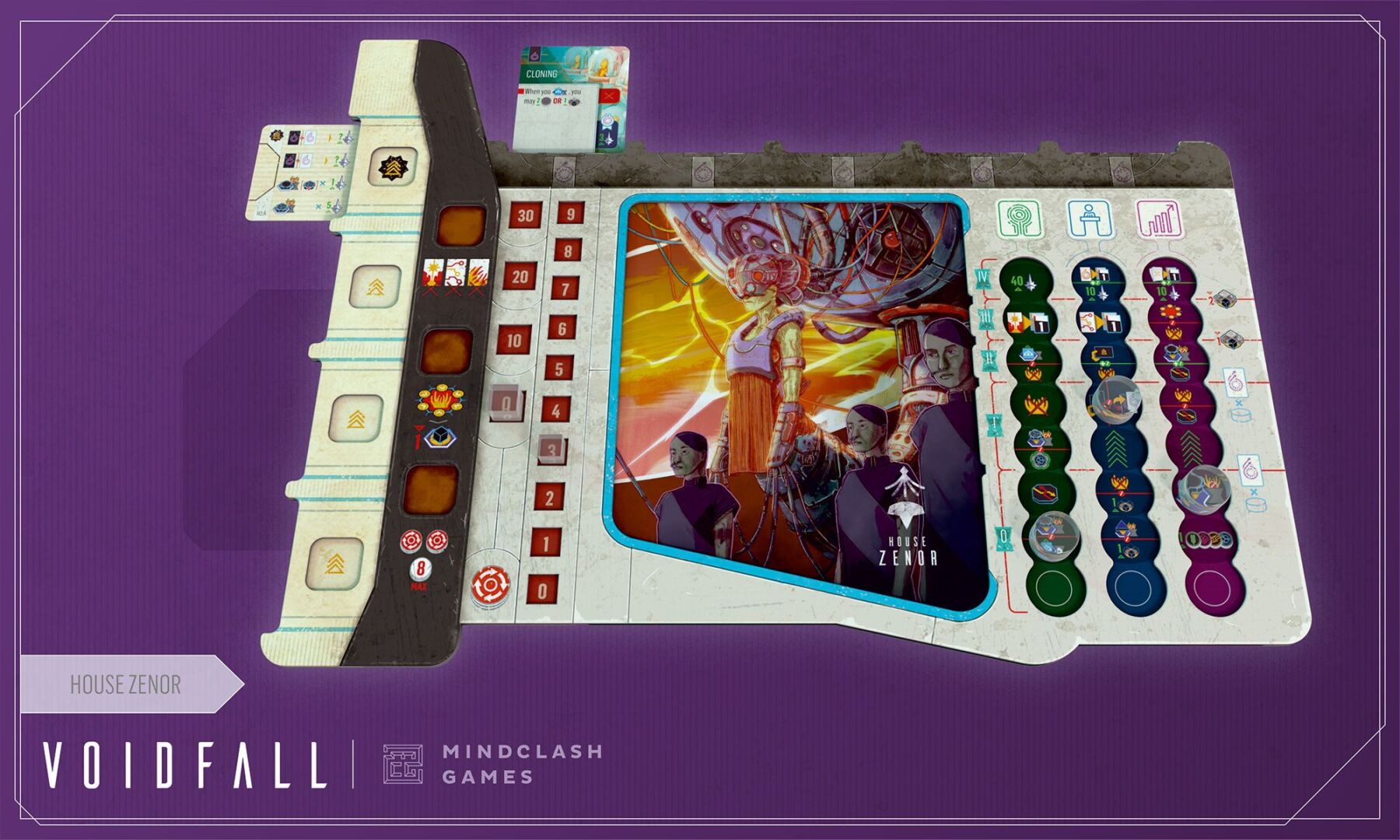
Walking the thin line between genius and insanity, the eccentric Lord Zenor’s leadership elevated his people from insignificance to becoming one of the most technologically advanced Houses of Domineum. This happened centuries ago, but in his confidence that only he himself is capable of guiding the House efficiently, Zenor decided to upload his mind to a computer to “live” forever. He and his apprentices perfected the science of Cloning, and over the years the entire noble family of House Zenor has been replaced by various clones of the Wise Leader himself.
The Origin cards for this House are different as well, but looking just at the player board you’ll already notice that the Civilization Tracks are very distinct. The rewards are different, and even the tracks are of different lengths: when you reach one of the Leaps (green arrows) you immediately move on to the next reward space, so each Leap means that track is one space shorter than the rest. As for the rewards: House Zenor is less interested in massively increasing their population, so their Society track is more focused on pursuing Science and Engineering and keeping the Voidborn’s corruption in check. Their Statecraft track is shorter than the starter Houses’, and is more focused on gaining extra actions, while their Economy track is less about building and using their own Economy, and more about maintaining Trade relations with outsiders.
Another source of asymmetry is Technology. Each Technology has only two basic copies and only one improved copy (as we’ve previously discussed). You get the Improved version of your starting technology into your own hand, so whichever Technology you start off with, only you will be able to improve it. Like every other House, Zenor has a choice of two Technologies, and naturally, one of them is Cloning.
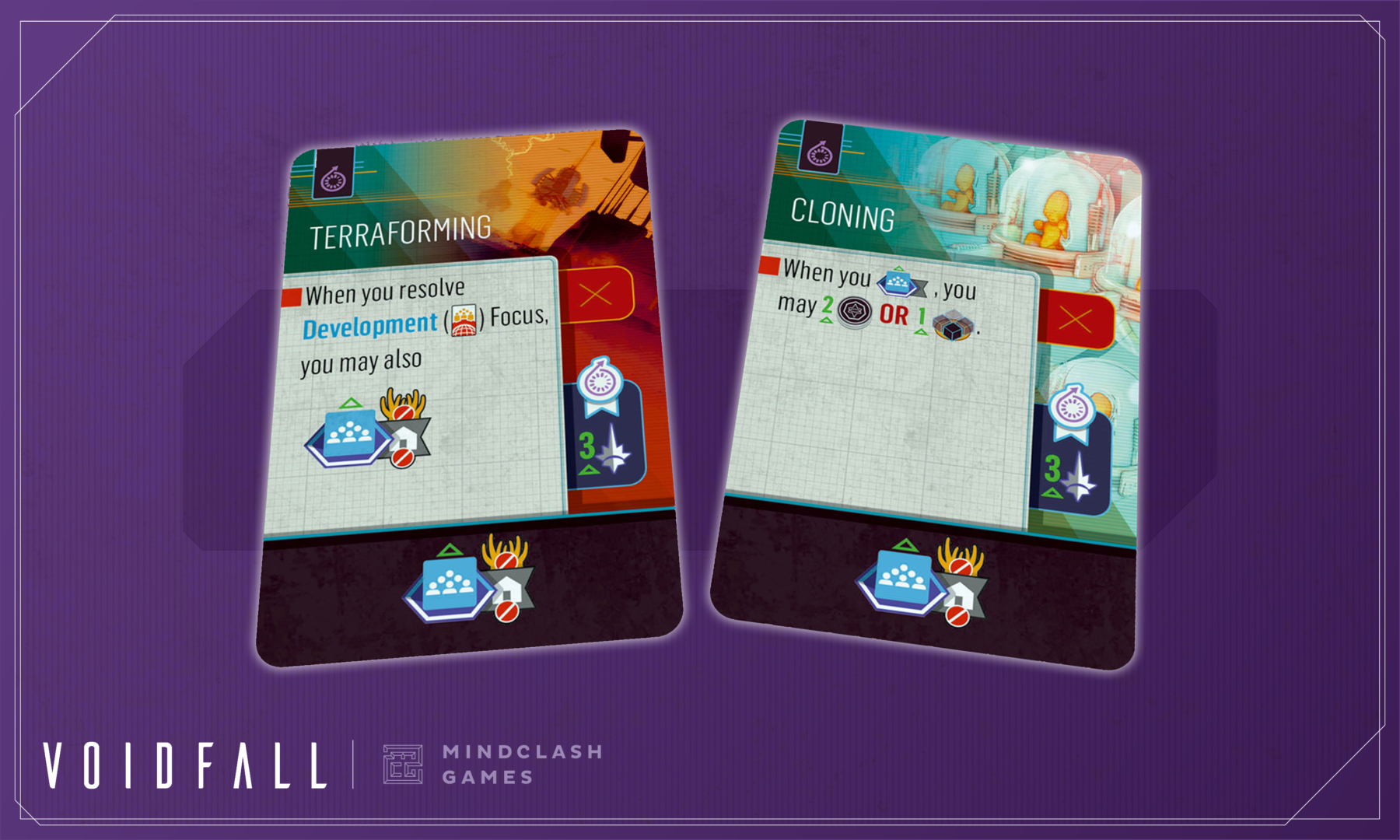
Each time you increase Population, you will gain 2 credits or 1 Fleet Power. (We covered how important Fleet Power is in Spotlight #5). House Zenor’s Society is not prone to increasing its population as commonly, but imagine combining Cloning with Terraforming: here is a perfect example of how you can build powerful combinations with as few as two Technology cards. With these two, when you resolve a Development Focus you can increase population for free (with Terraforming) and then also gain 2 credits or a Fleet Power (with Cloning) for maximum efficiency. And if you use the Industrialized Habitation action of Development (giving you another Population increase), you get to do it twice!
And finally, most advanced Houses also have one or two custom Focus cards: take a look at House Zenor’s Politics Focus… Unlike the one above, it does not require you to spend Credits to Annex, and the third action Enforced Doctrine that replaces Deprogramming allows you to steadily gain Fleet Power straight to your Home sector AND weaken nearby Voidborn forces as long as you keep your science stockpile high.

So, you see, even beyond the combination of Technology and Agendas, the various options presented by the Houses offer unlimited strategic combinations, guaranteeing you infinite challenge as you explore the struggle of the Houses of Humanity in the world of Voidfall.
In our next two spotlights, we will look “back in time” to the Voidborn’s arrival, and take a look at the Cooperative mode telling the story of the struggle against all odds to close the Rifts that threatened the very existence of Humankind. Don’t forget that you can now subscribe to the Kickstarter pre-launch page and get notified on September 28 when the campaign goes live: https://www.kickstarter.com/projects/mindclash/voidfall